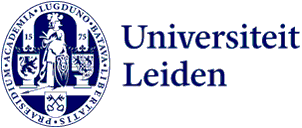
Digitisation: ignoring it is no longer an option
‘Jelena Prokic, university lecturer and researcher at the Leiden University Centre for Digital Humanities, will be preparing students for the challenges and opportunities of the digital world. In September, six modules will start on subjects such as statistics and digitally searching through texts. She will teach two of them. ‘I think that everyone should be confident, creative and critical when dealing with digital technology.’

Due to the big explosion of data, the advancement of fast computers that can do a lot of calculating and artificial intelligence, digital research is become increasingly important. However, the humanities are still humble in their approach, says Prokic. ‘This is also because we wonder what our data looks like exactly. We want to understand people and their history, but are computers able to do that as well?’
From statistics to an introduction to experimental research
According to Prokic, this is certainly the case. She will be teaching a statistics course, but will also teach her students how to digitally search through texts and how to analyse the resulting data. The courses include an introduction to experimental research, digital analysis of text and data, and visual storytelling. ‘Digital is everywhere’, says Prokic. ‘Everyone should take note of digital media and how they influence our society.’ In addition, she will address programming. ‘We store large amounts of data digitally. In order to analyse this data, you also need to know how to programme.’
The courses, which had until now been missing from the humanities curriculum, will be offered faculty-wide. ‘We have to prepare students for the labour market. Students say that they are afraid of statistics and that they have chosen a study programme at the humanities because they do not understand mathematics. No, you can do it too. It is just a different way of presenting data,’ says Prokic
Digital map showing all of the places that James Joyce visits
In addition, students remember information better when they have used it, according to Prokic, such as generating a map with all of the place names of places that Irish writer James Joyce visits in his books. Although the algorithms are not yet holy and details are sometimes missing, the possibilities are endless, she says. ‘Not yet everyone in the humanities is aware of this. This new way of teaching and research doesn’t replace the old one, but rather enrich it.’
Machine learning for language research
She herself sets a good example by using machine learning in her research into language variation, such as dialects. This form of artificial intelligence is used to build systems that can learn from processed data.
She also worked on data research into cyberbullying on Twitter, part of a research study by cognitive neuroscientist Henk van Steenbergen, of the Faculty of Social and Behavioural Sciences. Using university supercomputer ALICE made it easy to search through millions of tweets. ‘You can use algorithms to examine so-called sentiments, so whether a tweet is positive or negative. It would be impossible to do that by hand.’
Armed against cyberattacks
Taking the growing number of cyberattacks, such as on big businesses and infrastructure, into account as well, Prokic thinks that people should learn how to use this kind of technology. ‘Then we will know how to arm ourselves against it. It is the digital age. We have to learn how to deal with it, otherwise we will no longer count.’
In the first semester, the following courses are taught: Digital Media, Culture, and Society, Statistics for the Humanities (Statistics I), Introduction to Experimental Research for the Humanities. In the second semester it is possible to take the following courses: Digital Text and Data Analysis, Digital Data Analysis (Statistics II), Visual Storytelling for the Humanities.
